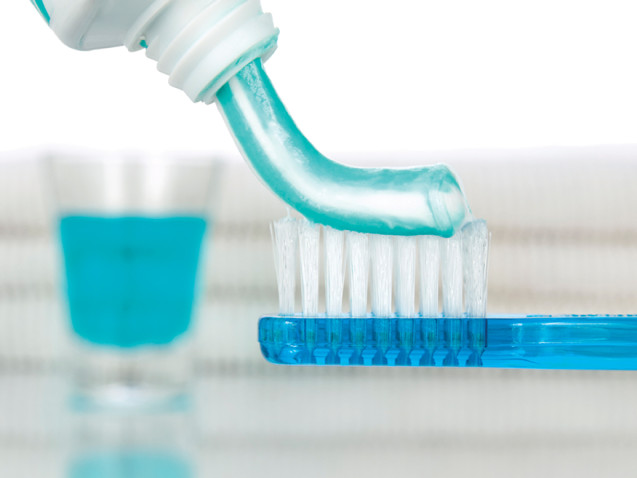You’re Never Too Old to Straighten Your Teeth
Healthy teeth can move at any age, so there’s no such thing as “too old” for braces. In fact, nowadays about one out of every five orthodontic patients is an adult.
A great looking smile is a surefire way to boost self-confidence and studies have shown that orthodontic treatment can even enhance an adult’s career opportunities and social life. There is also a potential health benefit, as misaligned teeth can be harder to clean, setting the stage for tooth decay and gum disease. Straightening teeth can also make chewing more comfortable. There are many reasons to consider orthodontic treatment at any age.
There are many options for straightening teeth and we welcome you to ask about it at your next visit. Dr. Weber works with an extensive network of orthodontic professionals in the Lancaster, CA are that he trusts and refers patients to. Please contact us for recommendations.
More
 Are you experiencing persistent pain in your jaw after a fall that won’t go away or is getting worse? The first and most important tip is to see your Lancaster, CA dentist or oral surgeon now! There are many reasons for jaw pain; however, you need a professional to understand what happened and evaluate your pain. By having a thorough exam, Dr. Weber can establish a proper diagnosis and treatment plan. You might have displaced a tooth, traumatized your jaw joint, or even fractured your jaw—but you will never know without a proper evaluation. Contact Dr. Weber’s office today for a complete exam so you can avoid other potentially serious problems.
Are you experiencing persistent pain in your jaw after a fall that won’t go away or is getting worse? The first and most important tip is to see your Lancaster, CA dentist or oral surgeon now! There are many reasons for jaw pain; however, you need a professional to understand what happened and evaluate your pain. By having a thorough exam, Dr. Weber can establish a proper diagnosis and treatment plan. You might have displaced a tooth, traumatized your jaw joint, or even fractured your jaw—but you will never know without a proper evaluation. Contact Dr. Weber’s office today for a complete exam so you can avoid other potentially serious problems.
More
Removing bacteria that build up on teeth every 12-24 hours by brushing your teeth, helps prevent tooth decay, gum disease and bad breath. None of us would think of leaving the house before brushing with your favorite toothpaste – but what’s in this substance we put in our mouths several times a day? And can toothpastes really do what they claim?
If the American Dental Association Seal of Acceptance is on the label, which means the manufacturers claims have been independently verified. If you don’t see the seal, you might want to take a closer look at the ingredients lists.
Here are some things to look for:
- Abrasives: In order to scrub off stains, you need a substance with a little graininess. Abrasives you may find include hydrated silica, hydrated alumina, calcium carbonate and dicalcium phosphates. None of these materials would have any cleaning effect without the scrubbing action of the toothbrush.
- Detergents: Toothpaste foams because it contains a detergent. The purpose is to loosen and break down substances on your teeth that otherwise wouldn’t be soluble.
- Fluoride: First introduced into toothpastes in 1914, fluoride is arguably the most valuable component in toothpaste. Fluoride strengthens tooth enamel and makes teeth more resistant to decay.
- Flavoring: Toothpaste would taste pretty bad without the addition of flavoring agents, which is why you always find various natural and artificial flavorings.
Looking for recommendations? Contact your dental team at Douglas B. Weber, D.D.S. in Lancaster, CA for suggestions, or just ask them at your next appointment.
More
Anytime the Centers for Disease Control and Prevention (CDC) issues a statement saying that fluoride and fluoridation in dentistry is one of the 10 most important public health measures of the 20th century, be rest assured there has been exhaustive evidence from years of research backing it up. However, discovering this fact initially was like many other scientific endeavors; it was a reactive versus proactive discovery. In the early 1900s, Dr. Fredrick McKay wondered why his patients in Colorado Springs, CO had brown stains on their teeth but with few to no cavities. After years of investigations, he established that it was due to something in the drinking water. In 1931, H.V. Churchill, a chemist for the Alcoa Company, discovered that when excess fluoride is present in water it stains teeth. That same year, Dr. H. Trendly Dean was studying the harmful effects of fluoride. However, by 1950 he instead discovered that very small amounts of fluoride (0.7 – 1.0 parts per million) in the water supply has large benefits in preventing tooth decay with no or minimal staining.
Thanks to years of additional research, we now know the mechanism of fluoride action—how it works through the saliva to promote and form more acid resistant enamel. If you have questions or concerns, feel free to contact Dr. Weber’s dental office in Lancaster, CA.
More
Dr. Weber and the dental team at Douglas B. Weber, D.D.S. are dedicated to providing the best and most comforting general and cosmetic dental care to patients in the Lancaster, CA, area. Oral and dental health is just a component of your overall health and wellness. To help you and your family live a healthy life and care for your teeth properly, the team at Douglas B. Weber, D.D.S. will periodically post important dental news, trends, and information to help you and your families maintain great oral health in between dental visits. We will also post any updates and changes that may occur at our office. Thank you for making Douglas B. Weber, D.D.S. your dental home.
More



